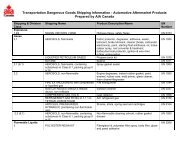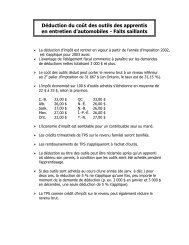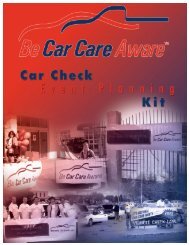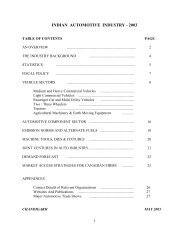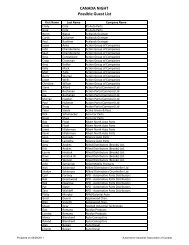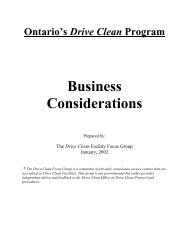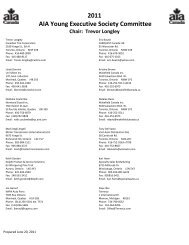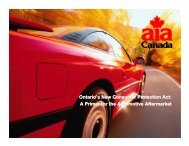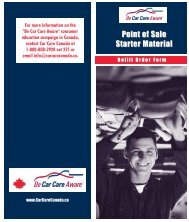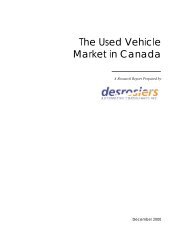Euro 5 Impact Assessment - Automotive Industries Association of ...
Euro 5 Impact Assessment - Automotive Industries Association of ...
Euro 5 Impact Assessment - Automotive Industries Association of ...
Create successful ePaper yourself
Turn your PDF publications into a flip-book with our unique Google optimized e-Paper software.
measures in other sectors. The Commission services considers these differences small andwithin an appropriate uncertainty range (e.g. +/- 10%) for this kind <strong>of</strong> analysis.Furthermore, it should be noted that according to the Systematic Review on HealthEffects <strong>of</strong> Air Pollution (WHO 2004) specific efforts should be undertaken to reduceemissions from combustion sources emitting primary particulate matter 18 . Thus, theCommission services conclude that the cost-effectiveness <strong>of</strong> <strong>Euro</strong> 5 is comparable withmeasures that would be undertaken in other sectors.6.4. <strong>Impact</strong> <strong>of</strong> other measuresIn addition to the options for reducing emission limits there are a number <strong>of</strong> additionalaspects that have been considered as part <strong>of</strong> the proposal. These measures contribute tothe policy objectives <strong>of</strong> the proposal, i.e. ensuring the proper functioning <strong>of</strong> the internalmarket while providing for a high level <strong>of</strong> environmental protection.6.4.1. Particulate emission limits for lean-burn petrol direct injection vehiclesThe proposal includes the introduction <strong>of</strong> a particulate matter emission limit <strong>of</strong> 5 mg/kmfor lean-burn petrol direct injection vehicles. Particulates from petrol vehicles are currentlyunregulated in the EU. Since there is a concern about the health effects <strong>of</strong> particulatematter and lean-burn engines produce high levels <strong>of</strong> particulates, the PM emissions shouldbe regulated.At present, petrol lean-burn engine technology is not widespread with only a few vehiclesavailable on the market. However, forecasts that were developed for the market share <strong>of</strong>the technology over the coming years suggest that by 2015, up to 10% <strong>of</strong> petrol cars willuse such engines.Particulate emissions from lean-burn petrol engines are lower than from diesels withoutafter-treatment but are significantly higher than from those fitted with filters. Particulateemissions from lean-burn petrol engines are also much higher than petrol engines thatoperate stoichiometrically. Test results on currently available lean-burn vehicles suggestthat there is some variation in the levels <strong>of</strong> particulate emissions produced by suchvehicles, ranging from about 3 to 8 mg/km.Results from the stakeholder consultation have suggested that manufacturers would notseek to use particulate filters for lean-burn petrol engines to meet a particulate matterstandard. Particulate matter abatement would be achieved through engine managementand therefore would imply reasonable costs.Moreover, the 5 mg/km limit proposed in <strong>Euro</strong> 5 for lean-burn petrol vehicles is in linewith those in other countries. Making international comparisons on emission limits isdifficult due to differences in test procedures. However, the proposed standard <strong>of</strong> 5mg/km is the same level as the new Japanese standard that is due to enter into force by2009 and similar to the standard used in the United States since 2004 <strong>of</strong> 6.5 mg/km (10mg/mile).18See p. 11 <strong>of</strong> “Health aspects <strong>of</strong> air pollution results from the WHO project “Systematic review <strong>of</strong>health aspects <strong>of</strong> air pollution in <strong>Euro</strong>pe”. WHO 2004 available athttp://europa.eu.int/comm/environment/air/cafe/activities/pdf/e83080.pdf24



